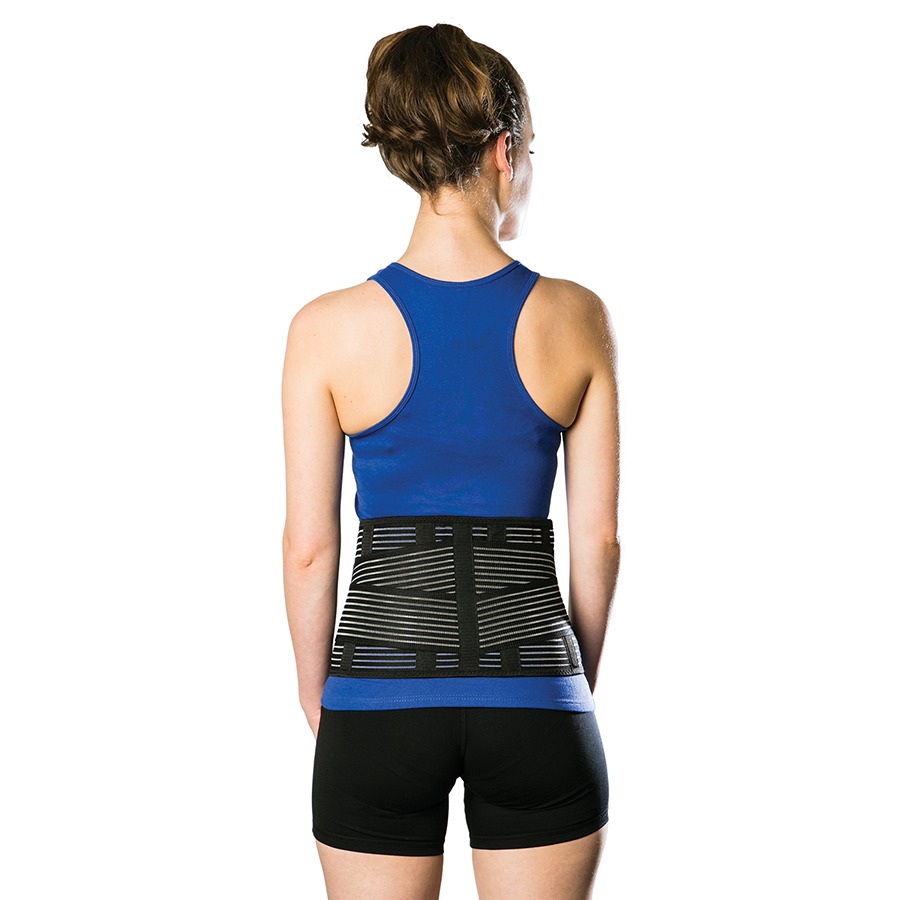Back Braces
Updated:
(Also known as Back Braces, Lower Back Support, Back Support, Lumbar Brace)
What is a back brace?
A back brace is a support which is designed to protect the lower back and reduce stress on the joints and muscles of the lower back during activity. It achieves this roll by restricting end-of-range spinal movements and provides stability and support during general movement.

When should I use a back brace?
Back braces are generally beneficial for people who are suffering from lower back pain or injury, particularly those patients who are in the acute phase of their condition or suffer from chronic back pain. They can assist in accelerating healing and recovery from injury by reducing the amount of aggravation during every day activities.
As a general rule, patients with back pain should avoid aggravating activities, however, if unavoidable, back braces can provide support and stability to reduce injury aggravation caused by these activities. In these instances, a brace should be used during aggravating activities or during those activities that are likely to aggravate the condition.
It is important to note, however, that it is generally not advisable to constantly use a back support or brace as your body can become dependent on it. This typically occurs gradually over time, with excessive use, and may be due to a loss of lower back strength and stability resulting from reduced muscular activation during brace use (since the brace already provides support). Weaning off the brace is generally recommended as strength, range of movement and function improves and symptoms reduce.
When should I avoid using back braces?
Back braces generally should not be used if they are uncomfortable or result in an increase in symptoms. However, it is important to note that this may occur in the initial phase of a lower back injury when the lower back is particularly ‘sensitive’ to minor movements and light touch. In these instances, the brace may still be beneficial for the condition although it should only be used once the initial sensitivity subsides and it is comfortable to wear.
If you are performing an activity that does not aggravate your condition or result in an increase in symptoms, then there is generally no reason to continue wearing a back support or brace.
What conditions may benefit from the use of back braces?
The following conditions may benefit from the use of a back support or brace:
- Sciatica
- Lumbar Disc Bulge
- Facet Joint Sprain
- Postural Syndrome
- Spinal Degeneration
- Osteoarthritis of the Lower Back
- Spondylolisthesis
- Stress Fracture of the Pars Interarticularis
- Lower Back Sprain
- Lower Back Strain
- Muscular Strain
PhysioAdvisor back braces
PhysioAdvisor’s braces have been carefully selected by experienced physiotherapists to ensure excellent quality and maximal benefit for patients.
AllCare Ortho Light Back Brace
The Allcare Ortho Light Back Support is one of the most commonly prescribed braces by physiotherapists to treat patients with lower back pain. It is designed to offer optimal support to the lower back and reduce stress on the joints and muscles of the spine during everyday activity. This ensures patients can remain as active as possible, whilst minimising the likelihood of injury aggravation and speeding recovery.
The Dr Med Back Brace may assist patients following spinal surgery by limiting movement and reducing stress on the spine. It comes with 4 spinal stays to ensure optimal comfort and support for your back.

Dr Med Industrial Belt
The Dr Med Industrial Belt is a comfortable, economical and effective back support which is ideal for use at work or at home. It is designed to reduce stress on the joints and muscles of the spine during physical labour or activities placing the spine at risk of injury. It is lightweight, comfortable and provides excellent support to the lower back to assist those patients suffering from lower back pain. The Dr Med Industrial Belt has a smaller width at the back of the brace than most other back braces (i.e. 20cm), a great width for frequent movement and bending. It also comes with shoulder straps (which can easily be removed if required) ensuring ideal fit and positioning of the back brace.

How do I purchase a PhysioAdvisor brace?
To purchase a PhysioAdvisor brace simply click on one of the links below or visit the PhysioAdvisor Shop.

Link to this Page
If you would like to link to this article on your website, simply copy the code below and add it to your page:
<a href="https://physioadvisor.com.au/shop/product-information/back-braces”>Back Braces – PhysioAdvisor.com</a><br/>
Return to the top of Back Braces.

